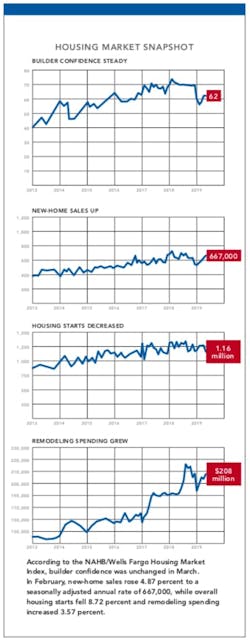Blueprint for Beautiful, Affordable Homes
Owning or renting a suitable home is increasingly out of financial reach for many households. In fact, almost a third of U.S. households are cost-burdened—spending more than 30 percent of their income on housing.
In any market, housing costs are determined by a complex equation involving labor and materials prices; interest rates and financing costs; federal, state, and local regulations; and supply and demand. Limited land, the skilled labor shortage, and rising fees all contribute to higher prices. NAHB analysis shows that regulatory requirements alone account for 25 percent of single-family home construction costs, and 30 percent for a multifamily unit. Community perceptions and demands are also central in determining the availability and cost of housing. These factors make it difficult to improve affordable housing inventory and to meet the needs of more diverse households.
Just as every community is different, there is no single “silver bullet” solution to housing affordability. The effort requires comprehensive strategies and a variety of tools, used alone or in combination, to reduce costs, boost supply, empower aspiring homebuyers, and support cost-burdened renters. Real solutions emerge when the public sector and private enterprise work together and seek innovative solutions for more families to achieve homeownership or access satisfactory rental housing.
To encourage developers and local governments to take important first steps together, NAHB has compiled extensive research on state and local policies and incentives that are in use to address affordability in American communities. A simple brochure and a comprehensive internet resource can be found at nahb.org/housingforall. Case studies show best practices in comprehensive planning, zoning and subdivision rules, and incentives and partnerships to deliver affordable, attractive homes that are an asset to their communities. The brochure and site include numerous strategies for achieving affordability goals and provide a blueprint for local government officials, builders, developers, architects, planners, and other stakeholders.
Wonderful communities that are affordable to families across the economic spectrum can be built. Indeed, many already exist. Learn how collaboration and innovation can make them a reality in your hometown.
About NAHB: The National Association of Home Builders is a Washington, D.C.-based trade association representing more than 140,000 members involved in home building, remodeling, multifamily construction, property management, subcontracting, design, housing finance, building product manufacturing, and other aspects of residential and light commercial construction. For more, visit nahb.org.
Access a PDF of this article in Professional Builder's May 2019 digital edition

